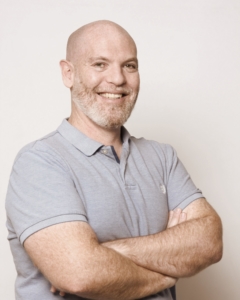The Digital Dealership, Your Audience: Marketing Activities, Part 2
The Digital Dealership, Your Audience: Marketing Activities, Part 2
In tonight’s blog post, guest writer Mets Kramer continues his exploration of the digital dealership. Part 2 of a series, tonight we look at marketing activities for your audience.
Digital Marketing to your Audience
Anyone who’s read marketing articles or blogs or attended a course will be familiar with the 4Ps of marketing, along with many similar acronyms. Product, Price, Placement and Promotion sum up the core tenant’s marketers need to consider when creating a marketing and advertising plan. In digital marketing and for the Digital Dealership this is even more important.
In the Digital Marketing world, we often speak about engagement. Engagement is critical to digital marketing success and why reconsidering the basic tenants of marketing is so important. In the digital world, what we see and what we want to see are determined by Engagement levels.
Over the past couple of years, you’ve heard a lot about the engagement algorithms used by social media sites and other platforms. These platforms have two main goals, to create user engagement with the platform and extend the time spent by users on the platform. To do this the platforms have highly intelligent algorithms that present content it calculates will be of interest to people. This is often based on the type of content or early engagement with it. If content has low engagement the algorithm effectively buries the content and, even if you have lots of connections, most of them will not see your content.
Creating content and marketing to your audience through digital media requires careful thought to be effective and this is where defining, segmenting and building strategies for your audience is important. Take a moment at this point to think about how you interact with various types of digital marketing, you’re someone else’s audience segment too, it will help with your own strategy.
In the first part of this series, we looked at defining who’s in your audience, and segmenting them. These segments can be defined by any criteria, from sales volumes to location to fleet size and industry. What’s important is to have segments defined to create strategies. You can define these for known contacts in your audience, but you can also create these segments in the unknown audience. For each of these Segments of the audience, consider the tenants of marketing.
First, what is the Product you want to present to each segment?
Is it the dealership, the experience of the people in the dealership, is it machine inventory or is it services like rental, your shop or parts? Each of these items is of varying degree of interest to your audience. Content should be created for each of the products your dealership has to offer. Your existing customers may want to learn more about service products. Your prospect customers may want to know about the inventory you have for sale or about the brand you represent and the capabilities of that brand. Your unknown audience likely needs to learn more about who you are and about the dealership in general. This will help them to recognize and consider your other products, like machines, in the future. Regardless, it’s important to understand all the products you have to offer as each audience segment will find different values on each product. Furthermore, don’t forget, your content needs to be engaging, so try and use video, audio, closed captioning and imagery.
Second, what channels will you use to place the content for your audience to see, engage with or react to?
There are traditional channels, like advertising sites, billboards and magazines. There are digital channels including email campaigns, your website, Linked In, Facebook, Instagram etc. and there are also physical channels like signage, brochures, posters and even invoices. What is important is to understand what audience you’ll be addressing through each channel and what the purpose of the content is.
The Channel selection can be approached from multiple directions. Consider for each channel, “what audience segments use the channel?” or approached from the other direction, “what channels do your target audience segments use?” You need to determine this for each audience segment.
In the last few years, I’ve seen LinkedIn be corporation and brand development focused, Facebook focuses on small contractor and community focused, Instagram looks to be Brand, Product or announcement focused etc.
Third, what will be your plan combining these 3 main aspects. Audience Segment, Contact and Channel?
For this step it is often helpful to create some matrixes. For each defined audience segment create a grid with 2 axes. One for Product content and the second axis for Channel. This work will help you really think through what content to place on each channel to engage your audience. For your digital channels this is critically important, and the work done to define your audience and your product content will help you make sure the content is engaging. Content placed on the right channel designed for the audience in the channel will always get you higher engagement, and in return, your content will be viewed by more of your audience members.
Finally, as a Digital Dealer, how will you use Information to augment your marketing?
Using and collecting information is the hallmark of a smart and digital dealership. Analyzing information about your audience, including feedback from marketing and advertising efforts, help you to fine tune all the above 3 aspects, content, audience and channel. Here are some examples.
- Add user specific information to Email Campaigns. “Hi John, because you own motor graders, we thought this inventory item might be of interest to you”. This can be done though tagging in the mail software and merge codes. This content will be many times more engaging.
- A Dealer website that recognizes returning customers and provides shortcuts to frequently visited pages or functions, and filtered inventory or promotions based on existing Fleet. “Welcome back Bill, this section lists the functions you often visit; Online Parts, Machine Specs. Your 410 is due for a service, here’s a link to the filter kit”
Spending time analyzing your audience always pays. They can be your existing customers, local contractors or people you don’t know. Building a marketing plan, for each of the audience segments you’re interested in, will help you retain the customers you have and funnel in new customers to your sales and after sales operations.
Mets Kramer
Mets.kramer@strategicevolutions.ca





